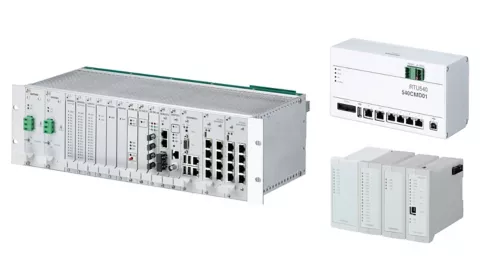1. EXECUTIVE SUMMARY
- CVSS v3 7.2
- ATTENTION: Exploitable remotely/low attack complexity
- Vendor: Hitachi Energy
- Equipment: RTU500 series products
- Vulnerability: Improperly Implemented Security Check for Standard
2. RISK EVALUATION
Successful exploitation of this vulnerability could allow an attacker to to update the RTU500 with unsigned firmware.
3. TECHNICAL DETAILS
3.1 AFFECTED PRODUCTS
Hitachi Energy reports that the following RTU500 series products are affected:
- RTU500 series CMU Firmware: Version 13.5.1 up to and including 13.5.3
- RTU500 series CMU Firmware: Version 13.4.1 up to and including 13.4.4
- RTU500 series CMU Firmware: Version 13.2.1 up to and including 13.2.7
3.2 VULNERABILITY OVERVIEW
3.2.1 IMPROPERLY IMPLEMENTED SECURITY CHECK FOR STANDARD CWE-358
A vulnerability exists in the RTU500 that allows for authenticated and authorized users to bypass secure update. If a malicious actor successfully exploits this vulnerability, they could use it to update the RTU500 with unsigned firmware.
CVE-2024-2617 has been assigned to this vulnerability. A CVSS v3 base score of 7.2 has been calculated; the CVSS vector string is (CVSS:3.1/AV:N/AC:L/PR:H/UI:N/S:U/C:H/I:H/A:H).
3.3 BACKGROUND
- CRITICAL INFRASTRUCTURE SECTORS: Energy
- COUNTRIES/AREAS DEPLOYED: Worldwide
- COMPANY HEADQUARTERS LOCATION: Switzerland
3.4 RESEARCHER
Hitachi Energy received information about this vulnerability through responsible disclosure.
4. MITIGATIONS
Hitachi Energy recommends that users update to CMU firmware version 13.6.1 and enable secure update feature on all CMUs of an RTU500.
Hitachi Energy recommends users implementing recommended security practices and firewall configurations to help protect the process control network from attacks originating from outside the network. Process control systems should be physically protected from direct access by unauthorized personnel, have no direct connections to the Internet, and be separated from other networks by means of a firewall system with a minimal number of ports exposed. Process control systems should not be used for Internet surfing, instant messaging, or receiving e-mails. Portable computers and removable storage media should be carefully scanned for viruses before they are connected to a control system.
For more information, see Hitachi Energy Cybersecurity Advisory “Secure Update Bypass Vulnerability in Hitachi Energy’s RTU500 series Product”.
CISA recommends users take defensive measures to minimize the risk of exploitation of this vulnerability. CISA reminds organizations to perform proper impact analysis and risk assessment prior to deploying defensive measures.
CISA also provides a section for control systems security recommended practices on the ICS webpage on cisa.gov. Several CISA products detailing cyber defense best practices are available for reading and download, including Improving Industrial Control Systems Cybersecurity with Defense-in-Depth Strategies.
CISA encourages organizations to implement recommended cybersecurity strategies for proactive defense of ICS assets.
Additional mitigation guidance and recommended practices are publicly available on the ICS webpage at cisa.gov in the technical information paper, ICS-TIP-12-146-01B–Targeted Cyber Intrusion Detection and Mitigation Strategies.
Organizations observing suspected malicious activity should follow established internal procedures and report findings to CISA for tracking and correlation against other incidents.
CISA also recommends users take the following measures to protect themselves from social engineering attacks:
- Do not click web links or open attachments in unsolicited email messages.
- Refer to Recognizing and Avoiding Email Scams for more information on avoiding email scams.
- Refer to Avoiding Social Engineering and Phishing Attacks for more information on social engineering attacks.
No known public exploitation specifically targeting this vulnerability has been reported to CISA at this time.
Source:
